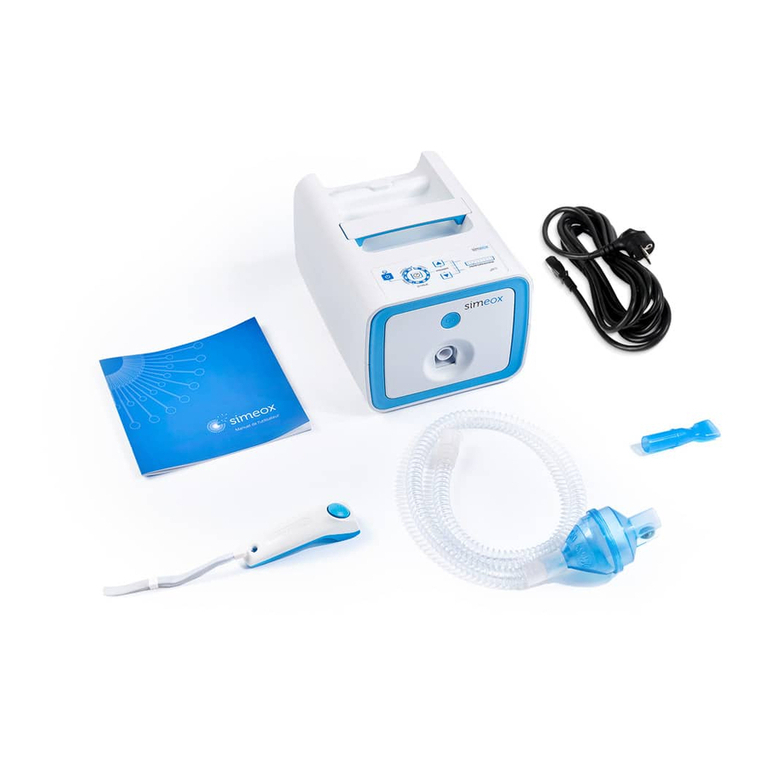
7
Only use the device as recommended by a
healthcare professional.
Change the consumables between each patient
for single patient consumables (lters, tube), and
after each use of the mouthpiece
Monitor the device during use and discontinue
use in case of malfunction.
Only use the consumables for one patient /
single use provided by Physio-Assist.
Always disconnect the device during the
inspiratory phase.
Start the session with minimal power and nd
your desired setting by increasing the signal
strength during the session.
Do not use or store the device where it might
fall, in a wet environment or in extreme heat.
Unplug the unit in case of contact with water or
any liquid substance.
Do not use the device in its carrying case.
Never use Simeox if the cord or plug is
damaged, if the device malfunctions or has
fallen, been damaged or immersed in water.
Do not disassemble the generator; there no
parts that need to be replaced by the user. Only
changing the remote control battery, according
to the manual, is your responsibility. Only
authorised personnel may repair the device.
Only use the power cords supplied by Physio-
Assist for Simeox to avoid overheating and
damaging the device.
Do not block Simeox against a wall so that the
mains switch is accessible.
The use of any accessories not recommended
by Physio-Assist is prohibited.
See the EMC section of this document to comply
with the distances of use and avoid interference
with other medical devices.
The Simeox mouthpiece is intended to come
into contact with the patient’s mouth. In case of
irritation, tingling or allergies, stop using Simeox
and consult a specialist.
1.4 Warnings and precautions
Precautions
WARNING: This section indicates the risk of injury to the user or the operator and the risks of damage to the
device.




























